Some of the links in this post may be affiliate links.
Here are some of the most beautiful, and best houseplants for north facing windows. You don’t have to be limited in your plant selection if you don’t have any sunny windows! There are still plenty of choices that you can grow in lower light. Here are 31 beautiful selections.
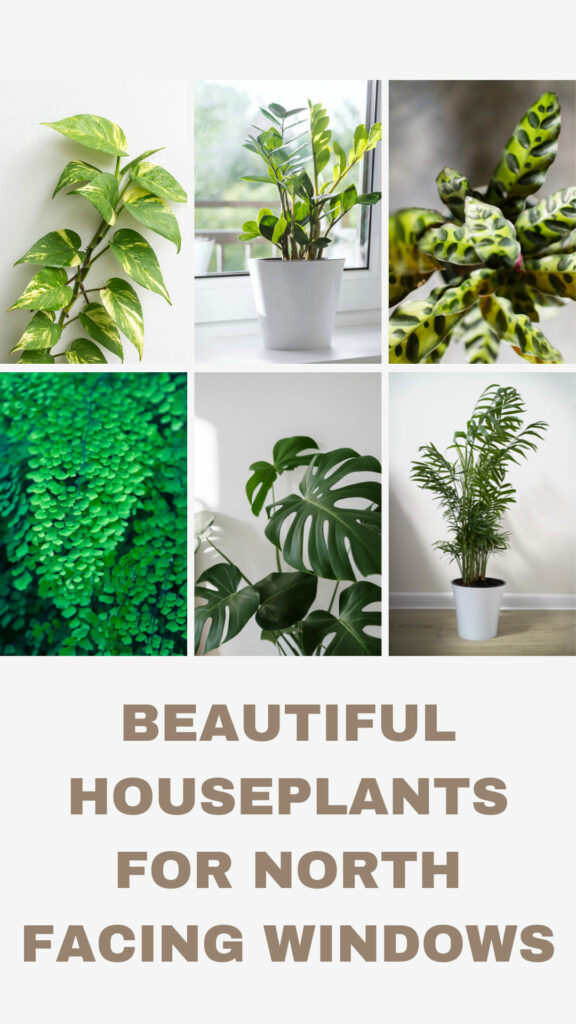
Keep in mind when I say northern facing windows have no direct sun, this is the case in the Northern hemisphere. If you are in the Southern hemisphere, your southern facing window will be the equivalent.
Table of Contents
BEST HOUSEPLANTS FOR NORTH FACING WINDOWS
1. ZZ Plant

Botanical Name: Zamioculcas zamiifolia
Tips: ZZ Plants are some of the toughest indoor plants that you can grow. They scoff at drought and can survive and even thrive in the a sunless window.
No special attention to humidity is needed. This is a very easy going plant!
Related Resources:
There are many varieties of ZZ plant, including the plain green ZZ plant, the dark leaved beauty, ZZ Raven, and even miniature versions like ZZ Zenzi.
2. Rattlesnake Plant

Botanical Name: Goeppertia insignis
Tips: Goeppertia insignis was previously known as Calathea lancifolia, and makes for a wonderful plant for your northern facing window.
These plants detest drying out, and they would appreciate higher humidity. They can be touchy with water quality and may get crispy edges if you’re watering with hard tap water.
Related Resources:
Find out how to care for Rattlesnake Plant and how you can avoid brown, crispy edges in your leaves.
3. Chinese Evergreen

Botanical Name: Aglaonema spp.
Tips: These are some of the most colorful foliage plants that you can grow indoors and they come in a beautiful array of colors ranging from green to pink and red.
Related Resources:
Be sure not to miss my ultimate guide to Aglaonema care where I discuss all care aspects, as well as some of the beautiful varieties out there.
4. Maidenhair Fern

Botanical Name: Adiantum spp.
Tips: Maidenhair ferns are delicate beauties, and they must never dry out otherwise you will quickly get a very brown, crispy plant.
Related Resources:
Be sure to read my maidenhair fern care blog post for all the care details you need, including a handy tip to ensure your plant doesn’t dry out!
5. Cebu Blue
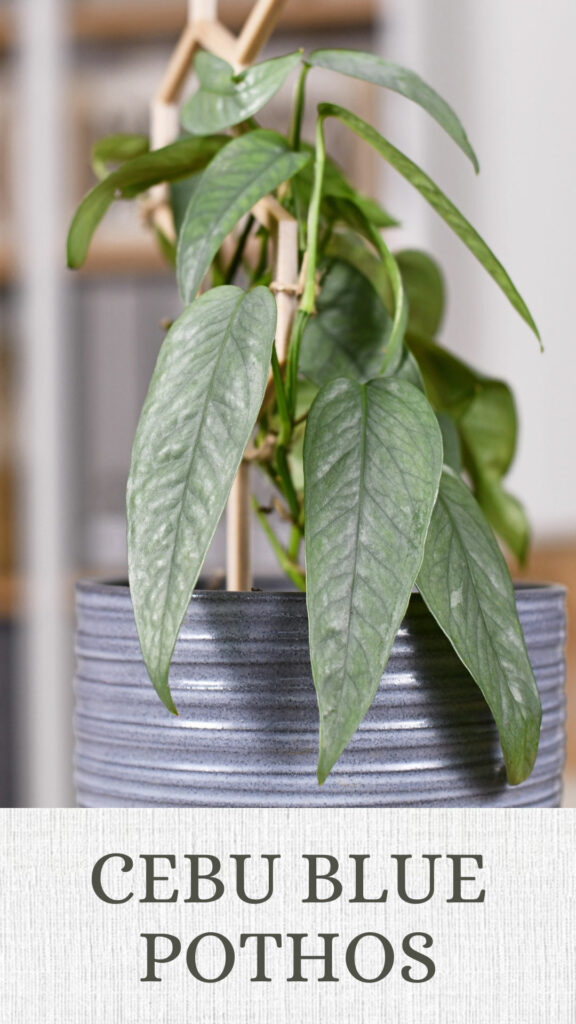
Botanical Name: Epipremnum pinnatum ‘Cebu Blue’
Tips: Just as easy to grow as any Pothos, ‘Cebu Blue’ has gorgeous silvery blue foliage. It’s a vigorous vining plant that you can grow in a hanging basket, or you can give it a climbing support.
Related Resources:
Check out my Cebu Blue care post for all the care details you need.
6. Silver Philodendron

Botanical Name: Scindapsus pictus
Tips: Although called the Silver Philodendron, it is not a Philodendron at all, but the care is similar. This vining plant does well in a hanging basket, or you can give it a climbing support like a moss pole.
Related Resources:
Find out more care details in my Scindapsus pictus blog post.
7. Cast Iron Plant (Aspidistra Elatior)
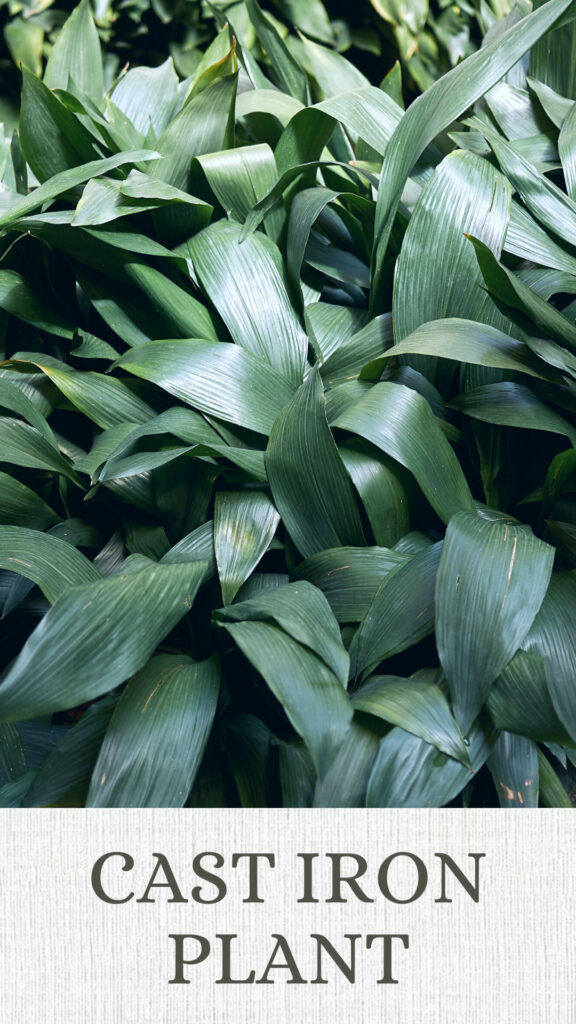
Botanical Name: Aspidistra elatior
Tips: It’s called cast iron plant for a reason, and this is one tough plant! My own plant came from a division that my grandmother gave me which she brought back from Italy with her.
Northern facing window are perfect for these plants. Although they are drought tolerant, try not and leave them too dry or they will develop a lot of brown, crispy edges.
Related Resources:
Be sure not to miss my Cast Iron Plant care post.
8. Heart Leaf Philodendron

Botanical Name: Philodendron hederaceum
Tips: One of the best low light plants around, this vining beauty is a joy to grow and propagate.
Releated Resources:
Often confused with Pothos, check out my Pothos vs. Philodendron post where I show you the differences.
Heart Leaf Philodendron care is a cinch.
9. Golden Pothos
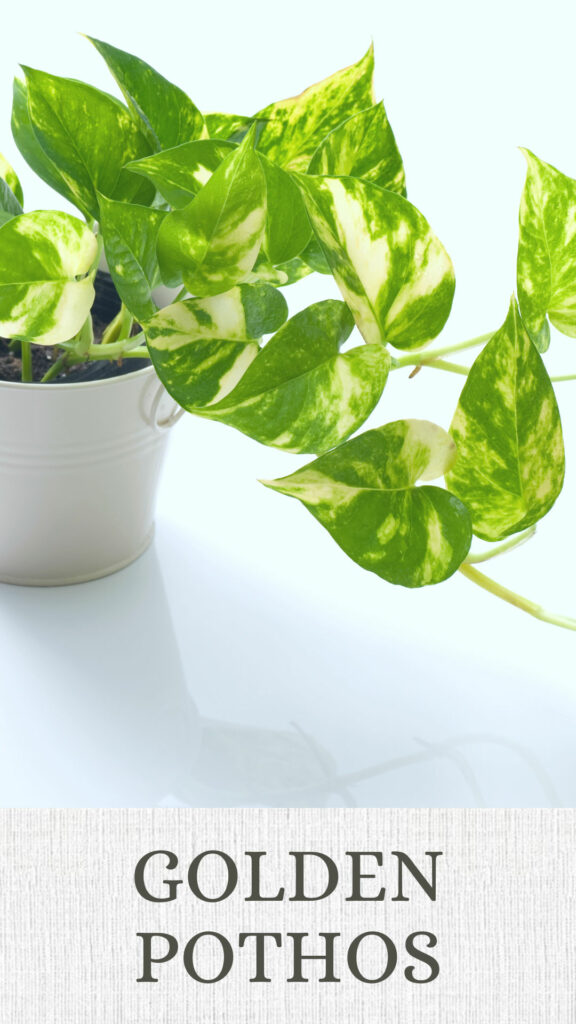
Botanical Name: Epipremnum aureum
Tips: Also known as Devil’s Ivy, Golden Pothos is a staple in any houseplant collection. You can’t really ask for more in a houseplant.
Not only is it easy to propagate, but it will thrive in sunless windows, and even areas with no natural light (provided there is at least fluorescent lighting on for several hours a day).
Releated Resources:
Be sure not to miss my Pothos care blog post, and if you’re having trouble propagating, I reveal top 10 secrets why your Pothos are not rooting.
This is such a versatile plant and you can grow Pothos permanently in water too!
10. Parlor Palm (Chamaedora elegans)

Botanical Name: Chamaedorea elegans
Tips: In my experience, this is the easiest palm to grow indoors. It stays a manageable size and seems to be much better suited to an indoor environment compared to other palms.
It is prone to spider mites though, so keep an eye on your plant. Rinsing your plant off periodically in the sink or shower will help deter spider mites.
Related Resources:
Be sure not to miss my Parlor Palm care blog post.
11. Snake Plant

Botanical Name: Dracaena spp.
Tips: Previously classified as Sansevieria, these plants are now in the Dracaena genus. Commonly called Snake Plant or Mother In Law’s Tongue, these are staples in any houseplant collection.
There are many species and cultivars available and you can easily form a collection just of snake plants! Their ability to survive neglect and poor light make these some of the easiest houseplants you can grow indoors.
You will get more vigorous growth in brighter light, but these are perfect additions to your north facing windows.
Related Content:
Be sure not to miss my posts on snake plant care , ways to propagate snake plant, and several beautiful varieties of snake plants you can grow in your home.
12. Peace Lily

Botanical Name: Spathiphyllum spp.
Tips: There are few plants better suited to a northern facing window than peace lily. They detest drying out though, so try and ensure that you never let your soil dry out completely. Peace lilies droop in dramatic fashion when allowed to go completely dry.
They appreciate warm, humid conditions. But you don’t have to fuss much with increasing humidity as they are pretty tolerant of average indoor humidity.
Related Content:
Be sure not to miss my peace lily care post where I discuss basic care as well as common problems with solutions.
13. Moth Orchid

Botanical Name: Phalaenopsis spp.
Tips: When people say “orchid” they are almost always referring to Phalaenopsis, or Moth Orchids. The orchid family contains over 25,000 species, but this is the one most people are familiar with.
When kept happy, moth orchids will bloom for months on end each year. Be sure to ditch those ice cubes though. Watering orchids with ice is not appropriate and you should use these methods to water your orchids instead.
Related Content:
I’ve been growing orchids for many years, and for the simplest care guide, be sure not to miss my Moth Orchid Mastery eBook. It contains everything you need to care for and rebloom these exotic beauties.
14. Bromeliads

Botanical Name: There are many genera of Bromeliad including Aechmea, Neoregelia, Guzmania, and more.
Tips: Did you know pineapples are also bromeliads? Pineapple plants need a lot of sun, but fortunately most other bromeliads will do just fine in a north facing window.
Most bromeliads are epiphytes, meaning they grow on trees, and it is important to keep the central cup filled with water.
Related Resources:
One of my favorite bromeliads to grow indoors is the Urn Plant. Also check out my post on 19 stunning bromeliad types that you can grow.
15. Philodendron Brasil

Botanical Name: Philodendron hederaceum ‘Brasil’
Tips: Just as easy to grow as it’s solid green cousin, Heart Leaf Philodendron, this variegated beauty makes for a lovely addition to your northern facing window.
Related Resources:
Be sure to read up on Philodendron ‘Brasil’ care.
16. Swiss Cheese Plant

Botanical Name: Monstera deliciosa
Tips: This iconic plant has made its way into almost every houseplant lover’s home, and for good reason. It is simple to grow and propagate, and the fenestrations (holes) on the foliage are beautiful.
They do get very large over time, so make sure you have enough room!
Be sure to give your plant a support, such as a moss pole or bamboo stakes. There are even variegated Monstera deliciosa plants but you will be paying an arm and a leg for these plants.
Related Resources:
Be sure not to miss my blog post on Monstera deliciosa care, and you can also make your own DIY moss pole for your plant.
Did you know that Monstera deliciosa also produces delicious fruit?
If you’re having trouble growing these plants, be sure to check out my Monstera problems and solutions blog post. I’ve taken all the most common problems my readers have come to me with and summarized in one handy post.
17. Nerve Plant

Botanical Name: Fittonia spp.
Tips: These stunningly beautiful foliage plants are the perfect plants for your northern facing windows. They stay compact and have gorgeous markings on the leaves.
Be sure to never let these plants completely dry out or they will droop and collapse. If you notice this and your soil is completely dry, give your plant a good thorough watering and they should perk back up again assuming you didn’t wait too long.
Due to their high moisture requirements, they are also wonderful to use in terrariums.
18. Never Never Plant
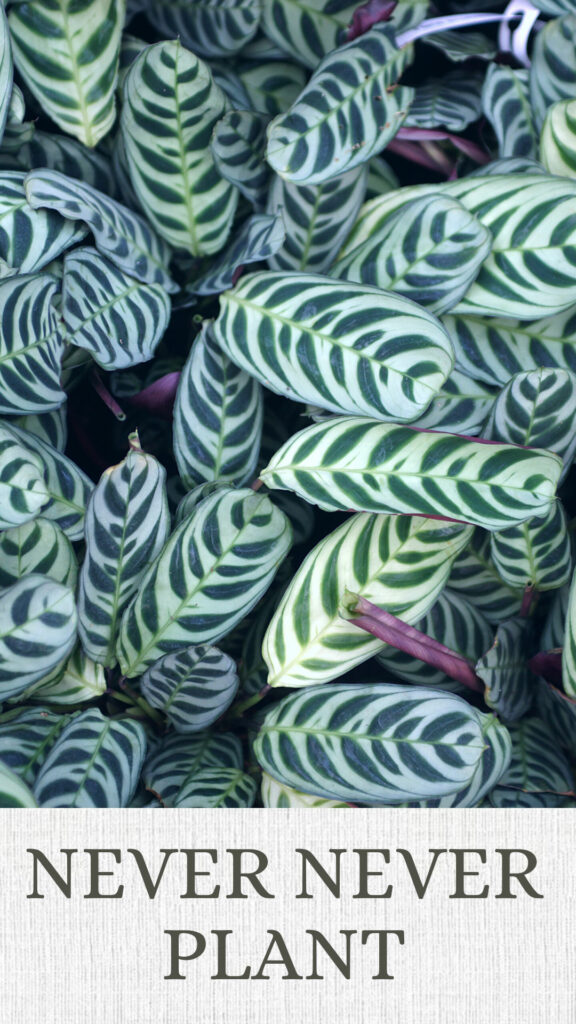
Botanical Name: Ctenanthe spp.
Tips: Often confused with Calatheas, these plants are closely related and they tend to be easier to care for and more forgiving than Calatheas.
Never let your plants dry out. They like evenly moist soil and appreciate higher humidity if you can provide it.
19. Boston Fern

Botanical Name: Nephrolepis exaltata
Tips: Boston Ferns like evenly moist soil so try and never let your soil dry out completely or you will surely make a mess on your floor with many brown leaves falling.
They do appreciate humid conditions, but if you can keep up with watering, this is definitely more important.
Related Resources:
Be sure to read my fern care blog post for everything you need to keep your ferns in prime condition.
20. Spider Plant

Botanical Name: Chlorophytum comosum
Tips: Spider plants are super easy to grow and practically propagate themselves with the numerous plantlets that they produce on their runners.
Related Resources:
There are numerous causes of brown tips on spider plants, and also numerous ways to propagate spider plants!
21. English Ivy

Botanical Name: Hedera helix
Tips: Easy to grow indoors, the only downfall for this plant is that they are prone to spider mites so keep an eye on them!
Spider mites occur most commonly in dry, warm indoor air. Keep an eye on your plant for spider mites and regularly give your plant a shower to rinse off foliage in order to discourage spider mites.
22. Lucky Bamboo

Botanical Name: Dracaena sanderiana
Tips: Most often grown in water, this easy to care for plant can survive in plain water for a long time. Using distilled water is best and don’t forget to add some fertilizer for best results.
23. Swiss Cheese Vine
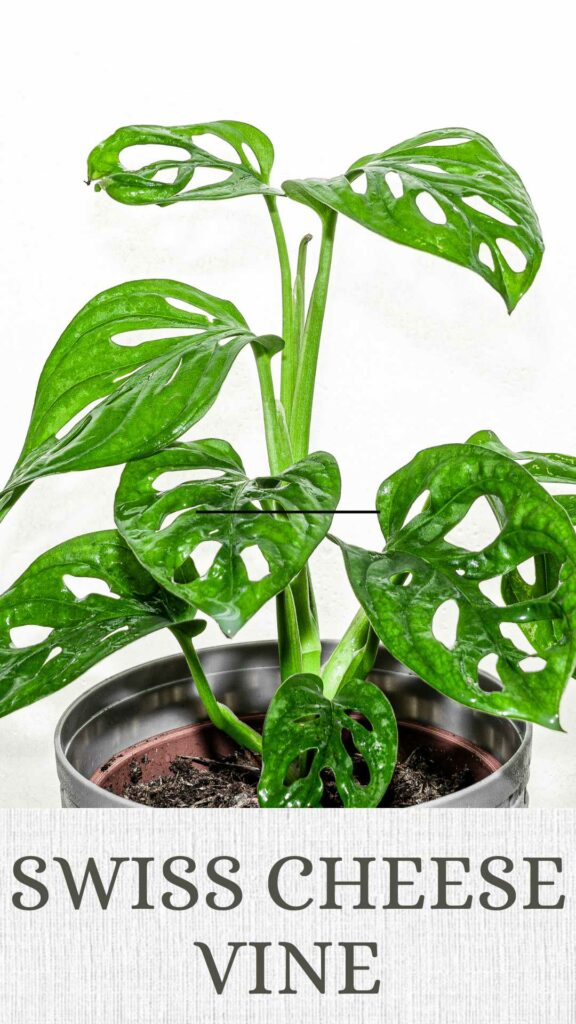
Botanical Name: Monstera adansonii
Tips: Often mislabeled as Monstera obliqua, unless you’re paying hundreds of dollars or more, what you probably have is an adansonii.
Monstera adansonii is very vigorous grower and it propagates very readily. Grow in a hanging basket, or if you want larger foliage to develop, give it a growing support stake or moss post.
Related Resources:
Be sure not to miss my Monstera adansonii blog post for information on care, propagation, and common problems.
24. Prayer Plant

Botanical Name: Maranta leuconeura
Tips: Best known for their leaves folding up at night time, and relaxing back down during the day, these warmth and humidity loving plants need to have consistently moist soil for best growth.
They detest drying out, and appreciate rain water or distilled water for best results.
Related Resources:
One common thing that many struggle with is curling and browning leaves. Check out my prayer plant post on how to avoid curling, browning leaves.
And did you know that prayer plants can flower?
25. African Violet

Botanical Name: Saintpaulia spp.
Tips: There are few plants that will bloom their heads off like an African Violet can, especially in northern facing windows with no direct sun.
They like consistently moist soil, and are simple to propagate using leaf cuttings, and you can also grow them from seed. There are even some beautiful variegated varieties out there.
Related Resources:
Be sure not to miss my African Violet care blog post for more information on care.
26. Jewel Orchid

Botanical Name: Ludisia discolor
Tips: Unlike many orchids which are epiphytes (grow on trees) and are typically grown in a bark mix, Jewel Orchids are terrestrial and can be grown in plain potting soil.
Also unlike most orchids, Jewel Orchids are grown for their foliage and not for their flowers. The flowers are dainty and insignificant.
Related Resources:
For everything you need to know about this plant, check out my Jewel Orchid care post.
27. Arrowhead Vine

Botanical Name:
Tips: This trailing houseplant is a cinch to grow and propagate. When you purchase them, they may appear compact, but don’t let that fool you. They will eventually starting vining out and trailing.
Related Resources:
Don’t miss my Syngonium care blog post for everything you need to know about caring for and propagating this delightful plant, as well as my Syngonium varieties post.
28. Christmas Cactus

Botanical Name: Schlumbergera x buckleyi
Tips: Often mislabeled and confused for Thanksgiving cactus, they are closely related and have the same care. They are considered short-day plants that need uninterrupted darkness at night (and preferably cooler evening temps) in order to bloom.
I almost didn’t include this plant in this post for plants in north facing windows, but I remembered when I was growing up, I grew a gigantic Christmas cactus in front of a large north facing sliding glass door. It was so big that it was in bloom for 4-5 months each year!
Related Resources:
Be sure to check out my Christmas Cactus blog post for information on care, propagation and how to get your plant to faithfully flower every year.
29. Pothos N’Joy
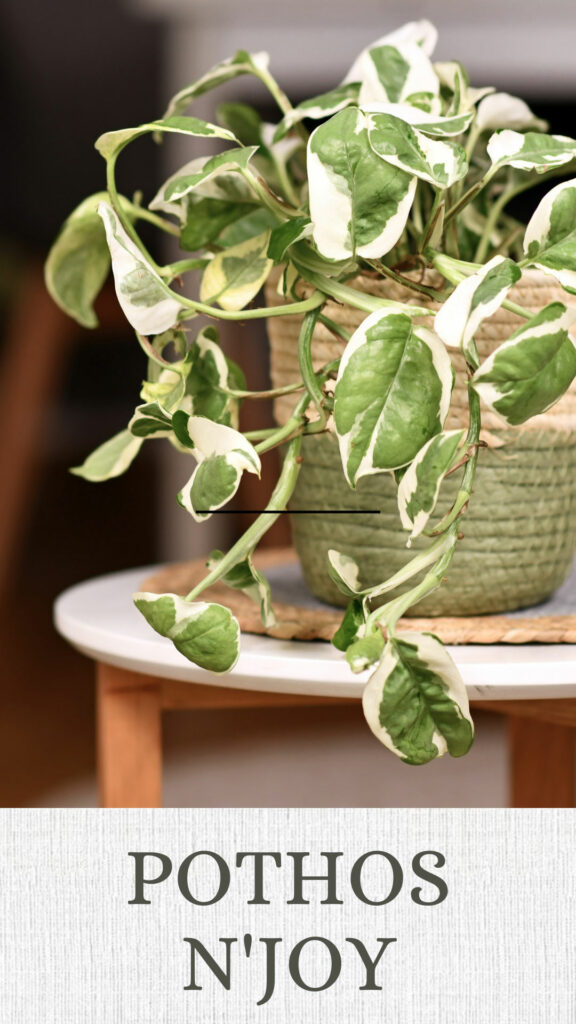
Botanical Name: Epipremnum aureum ‘N Joy’
Tips: Just as easy to grow as any Pothos, this cultivar has smaller leaves than most Pothos, but they’re beautifully variegated. Grow in a hanging basket and allow to trail, or give it a support for more of a statement.
Related Resources:
Be sure not to miss my Pothos N’Joy blog post for all the care information you need.
30. Pothos ‘Marble Queen’

Botanical Name: Epipremnum aureum ‘Marble Queen’
Tips: Yet another easy care Pothos, this one is not nearly as vigorous as the common Golden Pothos, but the care is identical, and it exhibits a more striking variegation.
Related Resources:
Be sure not to miss my Marble Queen care and propagation guide.
31. Staghorn Fern

Botanical Name: Platycerium spp.
Tips: These epiphytic ferns grow on trees and are often sold mounted on a slab of wood, often with some sphagnum moss between the plant and the wood slab.
When you water these plants, moisten the sphagnum moss that it is growing in and also make sure to wet the leaves as these are epiphytes and take in water through their leaves as well.
I hope you’ve enjoyed this pots on the best houseplants for north facing windows. Be sure not to miss my post on houseplants for south facing windows as well as best plants for east facing windows.

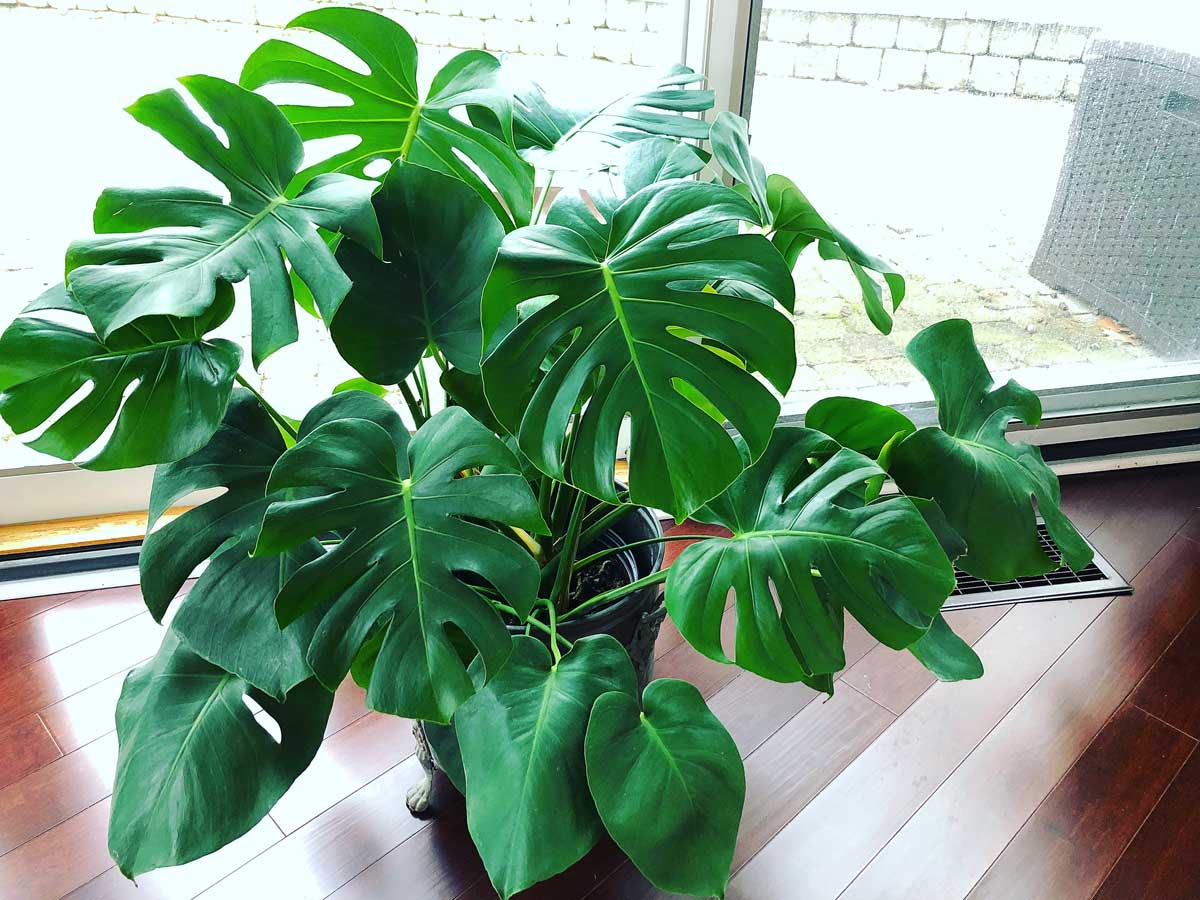

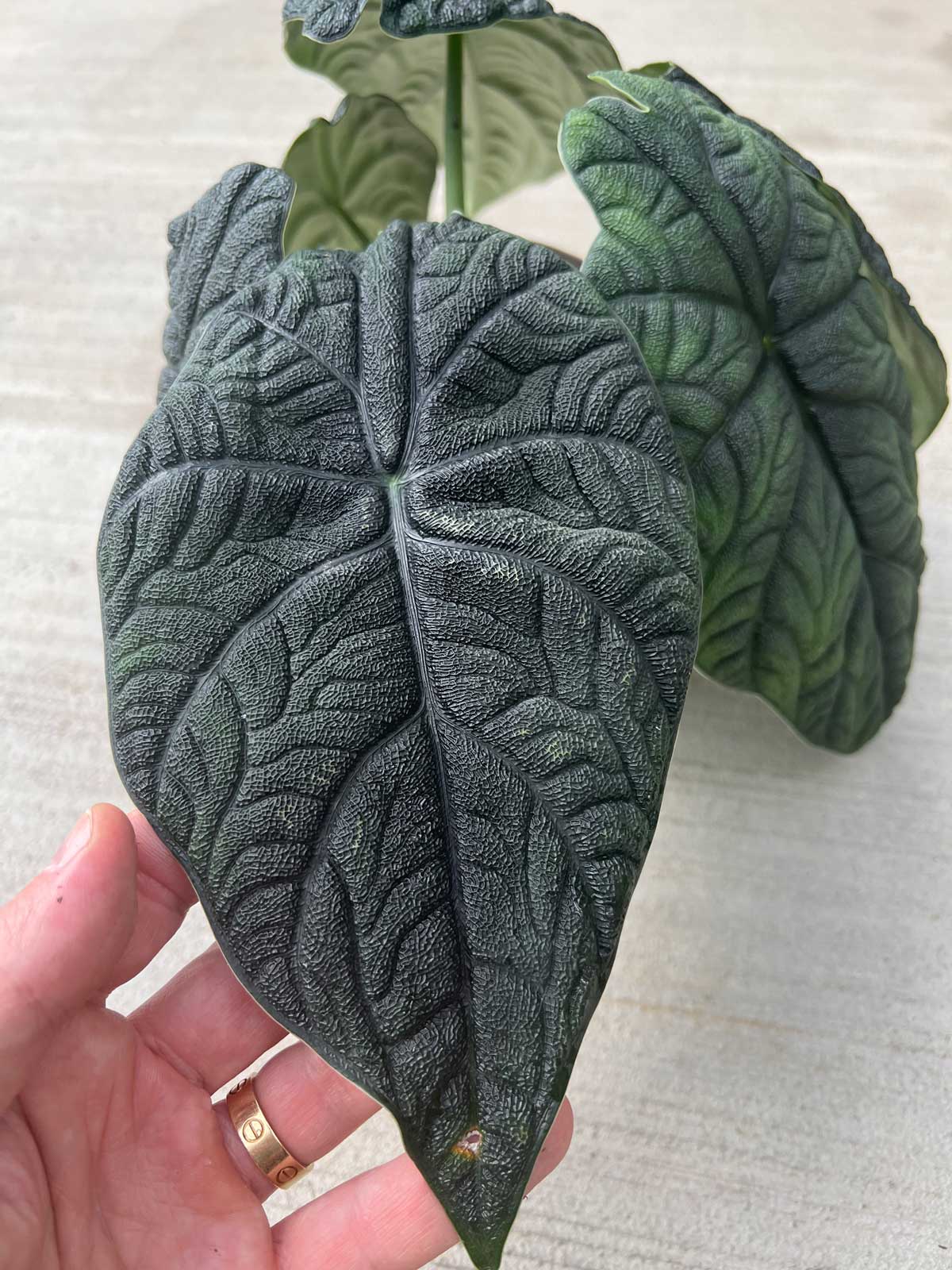
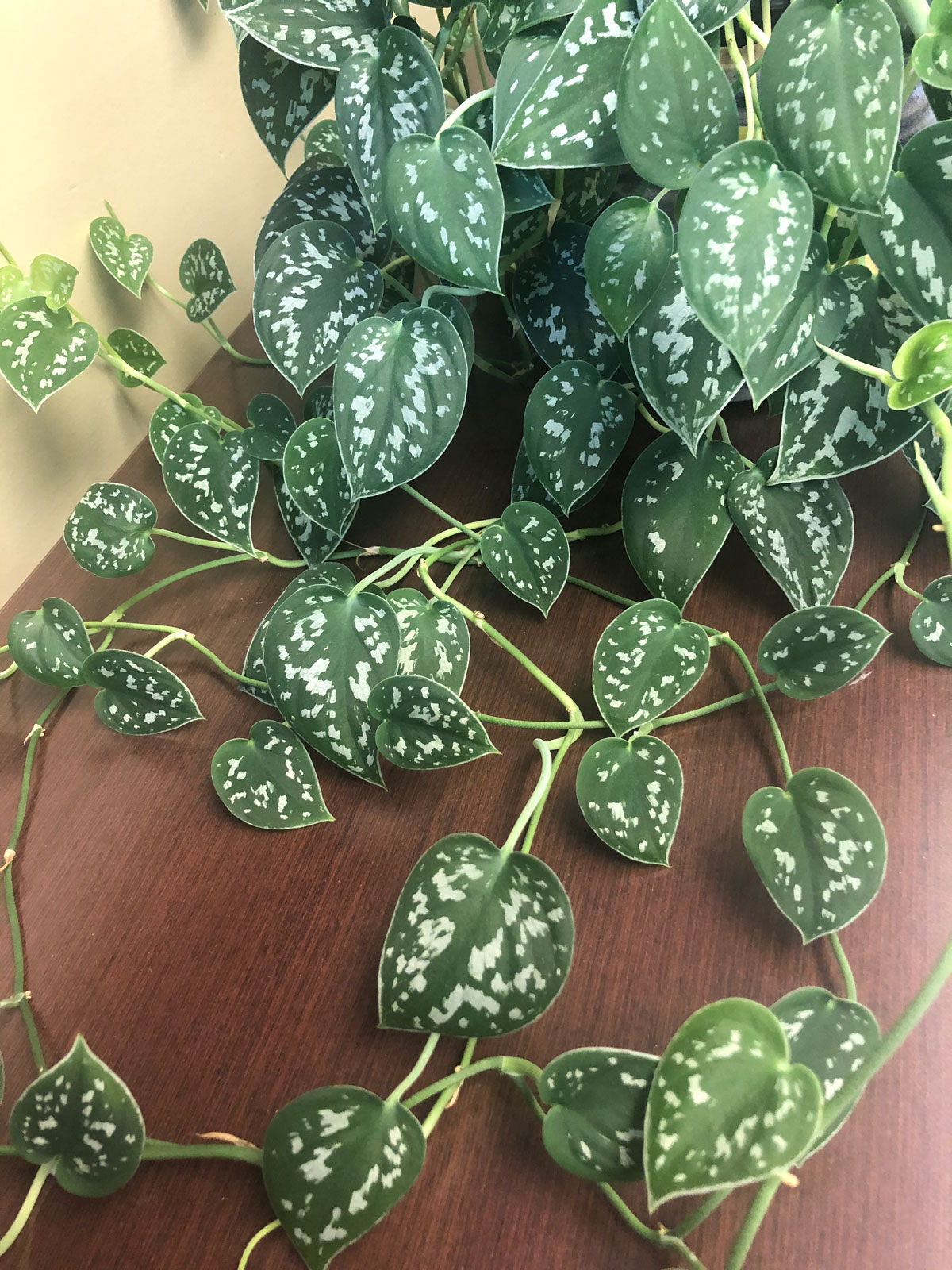
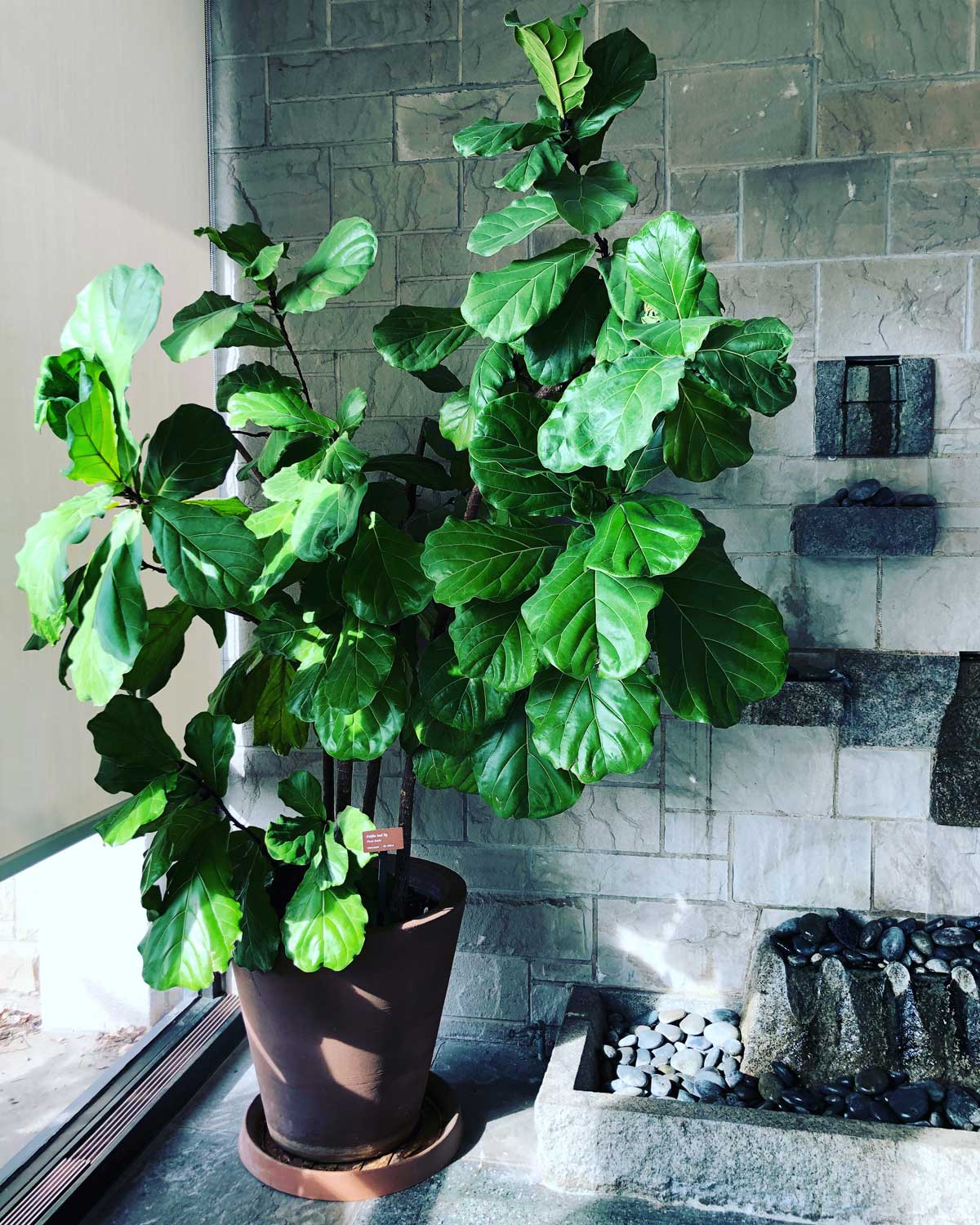

Megan
Sunday 12th of March 2023
Is there any way you could do one of these for East and/or West-facing? I have dozens of plants I am trying to find the best window for and I love for someone to take the work out of it for me ;-)
Megan
Thursday 23rd of March 2023
@Raffaele, Thank you SO MUCH for replying. I can’t wait to see what you come up with!
Raffaele
Monday 13th of March 2023
Yes I could definitely do that as well! I'll put it on my list.
Sally Burnam
Monday 2nd of May 2022
This list with photos and care instructions is invaluable! Thank you!!
Raffaele
Tuesday 3rd of May 2022
Glad you like it Sally!
Martha
Saturday 30th of April 2022
Thank you!
Raffaele
Saturday 30th of April 2022
You're very welcome Martha!